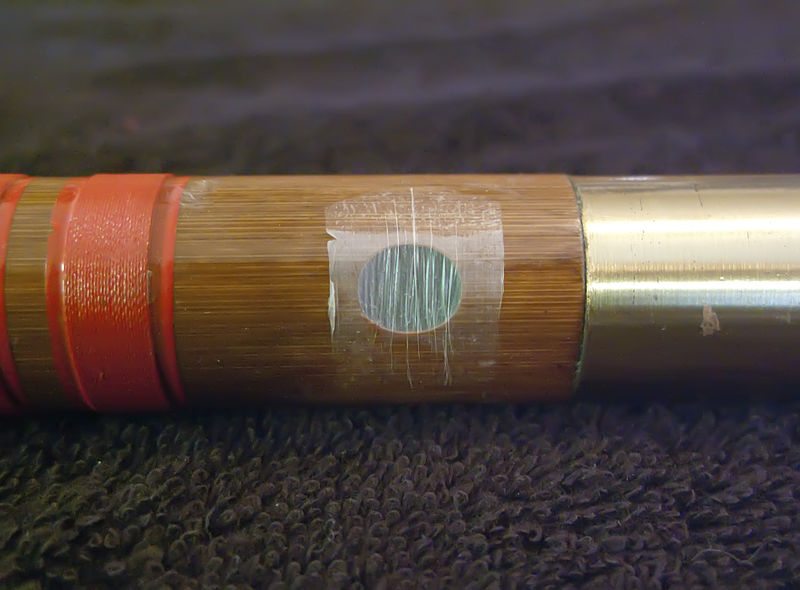What do you get when you cross a contemporary composer, a master flutist, a stand-up comedian, and a biomedical engineer with several nanotechnology patents? The answer is no joke. We discovered the multifaceted Kangyi Zhang as we were investigating contemporary piano composition techniques and have since been fascinated by this globetrotting Singaporean superhuman.
Before taking on the Western flute, Kangyi began his musical journey on the Chinese classical flute known as the dizi. But music was not his first choice…
Q: Greetings, Kangyi! It’s an honor to have you here with us on Musical U. Please tell us a little bit about yourself and how you started in music and how your career has developed from there.
I started music by chance when I was 12 years old. I had to pick a core curricular activity in school, we call it CCAs.
Chinese orchestra was my third choice.
My first two choices were not music related. Somehow I didn’t get my first two choices and I ended up in Chinese orchestra. That’s how I started playing the Chinese flute, known as dizi.
Between 18 to 20 years old, I was in the military service. I was pending my college studies in the U.S. I was thinking, “Maybe I should start exploring Western music because I’m heading over there to the United States. I should start learning about Western music, having explored Chinese music for the past six years.” And I thought it would be interesting to explore the Western flute because I would at least have some help, with my background in Chinese flute.
That’s how I started learning the Western flute, pretty late. To most people, 19 years old would be quite late, to start an instrument …
Q: Let’s look at that transition from Chinese to Western flute. Could you explain for our audience what the main difference is, both as a player and a listener, between the Chinese and the Western flute?
Okay, the Chinese flute is a bamboo flute. And we know that for the Western flute, in the Renaissance and Baroque periods, we had a wooden flute.
Most modern flutes are made with precious metals – silver, gold, platinum, etc. So, the material is very different. The sound is very different.
The Chinese flute has this membrane, has this very thin membrane that is pasted over a sound production hole. It is this membrane that is very, very critical to the sound of the Chinese flute.

If the membrane is actually broken, you can’t play a sound. That’s how critical that membrane is. And if it’s too loose or too tight, the sound is terrible. That membrane is so important, and players are so fussy about it. The rest of the Chinese flute’s sound is very brilliant, very bright – the sound of the bamboo.
The Western flute progressed from the wooden flute, which is more quiet. It’s a softer, it’s a less dense sound. But, of course, the metallic flutes, the modern flutes are more dense and really, I would say the sound is more powerful. It really projects. So the sound is very different.
The sound and the colors are very different. In terms of tonality, the Western flute is a chromatic instrument.
So, it can play in all keys. You just need one flute, you can play all the music.
The Chinese flute is made with specific keys in mind. For example, the G flute would be best for the keys of G and D. So, you will see a Chinese flutist carry a bag of six flutes.
It becomes a lot harder if there are chromatic notes: the Chinese flute actually has to cover half a hole. So, the player has to use the ear to decide just how much to cover. It’s quite cool, it really trains the ear.
No, it was really tough. The only thing that helped was that I knew how to breathe from the diaphragm.
Everything else was different. Fingering was different.
From Chinese to Western flute, to produce a good tone on the Western flute is so much harder.
For the Chinese flute, it’s all in the membrane – sometimes you have to adjust the membrane a little. The sound just becomes so bright and so perfect. The sound can change just by improving the membrane. Western flute is so much harder than the Chinese flute. I spend years to improve and really get the tone that I have today.
Beyond that, there are a host of contemporary flute techniques which expand the range of the traditional instrument to produce crazy new sounds and timbres:
That’s fantastic Kangyi! Thank you for sharing your fascinating journey from Chinese to Western flute. I’m looking forward to exploring with you all that you are doing not just as an instrumentalist/performer, but as a composer.
We might not go deep into his nanotechnology side, but Kangyi has plenty to share with us about music. He maintains an especially active presence and unique voice as a composer, and in promoting the new music of other composers. We’ll be rejoining Kangyi in future articles to learn more about the music and lifestyle of a 21st-century composer. In the meantime, you can learn more about Kangyi – his music, his comedy, and even his biotech – on KangyiZhang.com, Soundcloud, YouTube, and Facebook.







